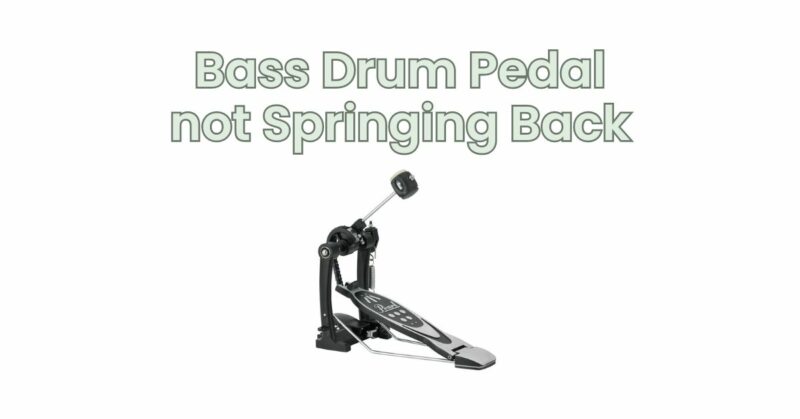A properly functioning bass drum pedal is essential for drummers to achieve a smooth and responsive playing experience. However, at times, you may encounter an issue where the pedal does not spring back as expected. This can be frustrating and affect your performance. In this article, we will discuss some common causes and potential solutions to address a bass drum pedal that is not springing back properly.
- Inspect and Clean: Start by thoroughly inspecting the pedal and its components. Look for any visible signs of damage, wear, or obstruction. Dirt, debris, or excessive pedal tension can hinder the spring’s movement. Clean the pedal, including the footboard, hinge, and spring mechanism, using a soft cloth or brush to remove any dirt or residue that might be causing friction.
- Check Spring Tension: Check the tension of the spring connected to the pedal. If it is too loose, the pedal may not return as expected. Conversely, if the spring is too tight, it can create resistance and hinder the pedal’s movement. Adjust the spring tension according to the manufacturer’s instructions, ensuring it is set to an appropriate level for your playing style and preference.
- Lubricate Moving Parts: Applying a small amount of lubricant to the moving parts of the pedal can help improve its responsiveness. Use a pedal-specific lubricant or a silicone-based lubricant to lubricate the hinge, spring, and any other pivot points. Be cautious not to over-lubricate, as excessive lubrication can lead to an accumulation of dirt and debris.
- Check for Obstructions: Examine the area around the pedal and ensure there are no obstructions that could interfere with its movement. Look for objects such as cables, drum hardware, or debris that might be impeding the pedal’s range of motion. Remove any obstacles or rearrange equipment to allow for smooth pedal operation.
- Pedal Height and Angle: Incorrect pedal height or angle can affect the pedal’s ability to spring back effectively. Adjust the height and angle of the footboard to match your playing preference and ergonomic needs. Experiment with different settings until you find a position that allows for a natural and comfortable pedal motion.
- Check Pedal Springs: Inspect the springs attached to the pedal. Over time, springs can weaken or become damaged, leading to decreased responsiveness. If you notice any issues with the springs, such as visible damage or signs of wear, consider replacing them with compatible replacements recommended by the pedal manufacturer.
- Seek Professional Assistance: If you have exhausted the above troubleshooting steps and are still experiencing difficulties with your bass drum pedal, it may be necessary to consult a professional technician or take it to a drum shop for further inspection and repair. A skilled technician can diagnose any underlying mechanical issues and provide appropriate solutions.
A bass drum pedal that does not spring back properly can hinder your drumming experience and performance. By following the troubleshooting steps outlined in this article, you can address common causes such as dirt, debris, incorrect tension, or obstructions. Regular maintenance, cleaning, and adjustments will help ensure that your bass drum pedal operates smoothly, allowing you to focus on your drumming without interruption.


